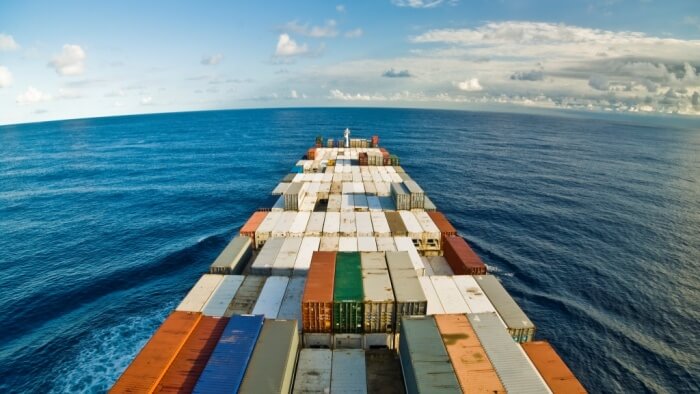Expanding abroad is easier than it used to be, but it's still not easy. Ecommerce businesses have a good opportunity to sell overseas, but only if they follow these rules of doing business in foreign markets.
The Rules Of Growing Globally
Expanding abroad is easier than it used to be, but it's still not easy. Ecommerce businesses have a good opportunity to sell overseas, but only if they follow these rules of doing business in foreign markets.

According to the OC&C Strategy Consultants, in a study in collaboration with Google, online sales from outside the UK will rocket from the £4bn generated in 2012 to an estimated £28bn by 2020, accounting for around 40% of total sales revenue.
We are seeing this external growth happening in real time. As the CEO of a print-on-demand, e-commerce platform (Spreadshirt) I spent much of 2014 optimising our services for an international audience and looking into potential new markets.
To improve our sales, we are now active in 19 markets and 12 languages and our customers can pay in 11 currencies. We also operate five production sites in Germany, Poland, the USA and Brazil and deliver to about 200 countries.
"Most consumers want to buy from a local service"
Changes in the world of retail, technology and delivery to global consumers moving so fast, means ecommerce companies now need more than just inspiring customer experiences, great sales strategy and a savvy marketing plan to succeed abroad.
All the successes generated by launching in new countries can be rapidly jeopardised with a poor delivery and supply chain. Without establishing a solid plan and network you might as well have thrown away the money spent on expanding.
So how did we make our international growth strategy work? By focusing on seven key areas:
1. Knowing that growing globally might mean appearing local
Your internationalisation strategy should be about making things easy for your customers and this might mean localising your brand and website. Customers should be able to access your site via their own country domain name and pay in their currency.
Most consumers want to buy from a local service and some of our sellers are only interested in reaching their domestic market, so we have had to provide that, alongside a global service for those that want it.
2. Focus on where there already is customer demand
Know your market and go to where the customer is. Our recent expansion into Australia, Canada and Switzerland was because, not only are these markets important, but we knew that in these countries there was already a significant demand for our products.
3. Checking on the local tax and business rules
This is where partnering can sometimes be a better bet than organic growth; you take on a business which already has all the right permits and understands how to do business in the region. For example, in the USA there are tax variations between the States, which need to be taken into account, along with the tax issues surrounding cross-border sales.
If a customised t-shirt is sold by a YouTuber in New York and shipped to Brazil, but the transaction happens in Berlin, where is the tax paid? These are issues an international e-commerce company must be on top of.
Spreadshirt is not only an online retailer, but we also provide a platform for other e-sellers, so this is especially key for us; it’s our job to make this a smooth and efficient process. No-one wants to get bogged down in tax issues when they’re creating and selling their ideas.
4. Getting the product to the consumer
Shipping is a vital component in the supply chain and it must be fast, reliable and priced right. In 2014 we added delivery to over 150 new countries. Within weeks, we had to delist 10 countries due to fraud and delivery problems. However, there were some nice surprises within the mix.
Some countries even with small populations, such as Bermuda, Guadeloupe and French Polynesia, are doing very well. Other countries had good sales, but have had to be paused until delivery issues are sorted out. Spend time getting this right.
5. Planning to get on the ground
Many of our key sellers build a fan base on global social platforms such as YouTube and Facebook - making demand for their products truly international. We see huge traffic coming from countries like India and Brazil, meaning that eventually shipping will not be enough to satisfy consumer expectations.
We’ve therefore acquired last year a partner in Brazil and are looking at India, Turkey and other countries, to reduce the shipping time. A demand driven approach from traffic or shipped orders always governs our next steps. You have to go to where the customer is.
6. Not forgetting cultural differences
Don’t forget to consider the possible complications of growth in different regions. Are they culturally similar to your initial countries? This is not just language but consumer attitudes.
For example, the US and UK are vastly different in their consumer behaviour, so perhaps look at the possibilities of partnering or acquisition in countries where doing business might be complicated or culturally very different. Often, the quickest route to success in a region is to find locally successful companies to partner with.
7. Planning and logistics are key
Finally, don’t forget that expansion is about planning and establishing good logistics with reliable shipping partners. You may be able to get your package out of the country easily, but who will be responsible for it once it arrives at the border of the delivery country? Last mile issues can often be a challenge for businesses looking to expand.
Your internationalisation strategy however should be about making things easy for your customers and this might mean website localisation as a first stage of expanding into new territories. Spend time localising your marketing activity and content and establishing reliable partners is a good investment.
The process of growing internationally has been a positive move for us. The world is a great place to do business and in our experience more valuable orders were gained than lost due to expansion problems. Glitches have been easily sorted out by switching off certain payment types or changing a shipping provider.
Our goal is to continue expansion via acquisition, access, and strong international partnerships with an eye towards local production hubs. But while expansion is an important aspect of doing business, be sure you have a clear strategy with trusted partners in place before taking launching in new markets because all the successes generated can be rapidly jeopardised with a poor delivery and supply chain.
Thanks for signing up to Minutehack alerts.
Brilliant editorials heading your way soon.
Okay, Thanks!




